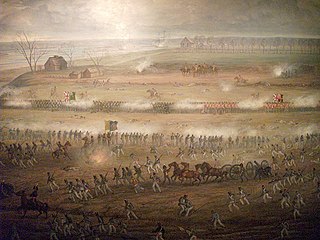
The Battle of Crysler's Farm, also known as the Battle of Crysler's Field, was fought on 11 November 1813, during the War of 1812. A British and Canadian force won a victory over a US force which greatly outnumbered them. The US defeat prompted them to abandon the St. Lawrence Campaign, their major strategic effort in the autumn of 1813.
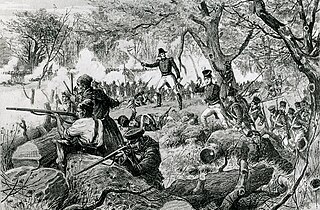
The Battle of the Chateauguay was an engagement of the War of 1812. On 26 October 1813, a combined British and Canadian force consisting of 1,530 regulars, volunteers, militia and Mohawk warriors from Lower Canada, commanded by Charles de Salaberry, repelled an American force of about 2,600 regulars which was attempting to invade Lower Canada and ultimately attack Montreal.
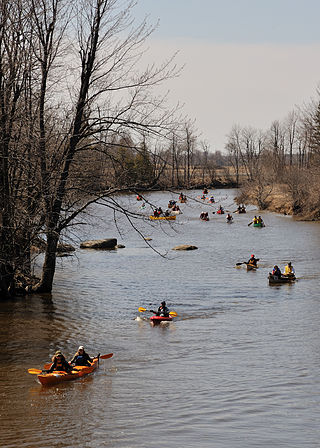
The Raisin River is a river in South Stormont and South Glengarry, United Counties of Stormont, Dundas and Glengarry in eastern Ontario, Canada, with the watershed encompassing portions of North Stormont, North Glengarry and the city of Cornwall as well. It empties into Lake Saint Francis on the Saint Lawrence River near the community of Lancaster.

The United Counties of Stormont, Dundas and Glengarry (SDG) is an upper-tier municipality in the Canadian province of Ontario that comprises three historical counties and excludes the City of Cornwall and the Mohawk Nation of Akwesasne. However, both Cornwall and Akwesasne form part of a larger census division named for the United Counties of Stormont, Dundas and Glengarry. The municipality's administrative office is located within Cornwall.
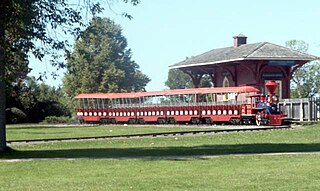
South Dundas is a municipality in eastern Ontario, Canada, in the United Counties of Stormont, Dundas and Glengarry along the north shore of the St. Lawrence River. It is located approximately 100 kilometres south of Ottawa and is midway between Kingston and Montreal, Quebec.

Stormont, Dundas and Glengarry Highlanders is a Primary Reserve infantry regiment of the Canadian Army. It is part of 33 Canadian Brigade Group, 4th Canadian Division and is headquartered in Cornwall, Ontario.
The Long Sault Parkway is a group of eleven islands west of Cornwall in the Canadian province of Ontario, as well as the name of the 10.1-kilometre (6.3 mi) scenic parkway connecting them. The islands, which include two public beaches and three campgrounds, were created by the flooding of the Long Sault rapids during construction of the St. Lawrence Seaway. The parkway, the islands, and their amenities are maintained by the St. Lawrence Parks Commission.

Fort Wellington National Historic Site is a historic military fortification located on the north shore of the St. Lawrence River at Prescott, Ontario. The military fortification was used by the British Army, and the Canadian militia for most of the 19th century, and by the militia in the 20th century, until 1923, when the property was handed over to the Dominion Parks Commission, the predecessor to Parks Canada. The fort was earlier named a National Historic Site of Canada in January 1920.

Morrisburg is an unincorporated community in the Municipality of South Dundas, located in Eastern Ontario, Canada. The population was 2,398 at the 2021 census.
The Glengarry and Stormont Railway (G&SR) was a short line railway running from the town of Cornwall in eastern Ontario to connect to the Canadian Pacific Railway's (CP) Ontario and Quebec Railway (O&Q) mainline just inside the Quebec border, a total distance of about 45 kilometres (28 mi). The name refers to the counties it passed through, today amalgamated as Stormont, Dundas and Glengarry.
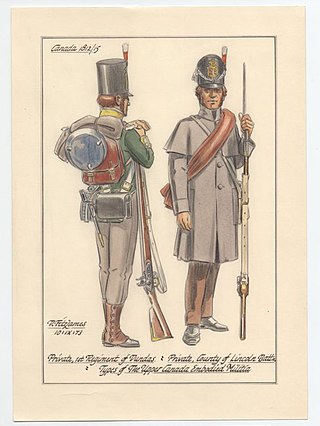
The Dundas County Militia was a regiment of the provincial militia of Upper Canada that was raised in Dundas County, Ontario, in the 1780s. The battle honours and legacy of the Dundas Militia are perpetuated by the Stormont, Dundas and Glengarry Highlanders.
The Battle of French Mills or First Salmon River Raid was a raid and battle fought on November 22, 1812. 100 American soldiers stationed at French Mills led a successful attack against 45 Canadian voyageurs on 22 October at the Battle of St. Regis. Half returned to French Mills while the other half departed for Plattsburgh, New York. In retribution, a mix of Canadian regulars and militia amounting to 150 men attacked the 50 Americans at French Mills forcing their surrender.
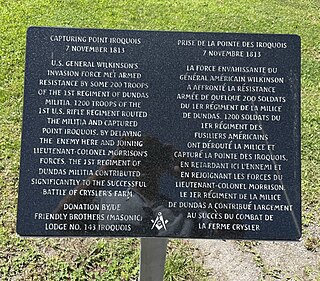
The Battle of Point Iroquois was a small skirmish fought on the morning of November 8, 1813, as part of Wilkinson's advance up the St. Lawrence towards Montreal. The skirmish occurred on the shores of the St. Lawrence River at Point Iroquois, Dundas County, where the river reached its narrowest point, only 500 yards across.
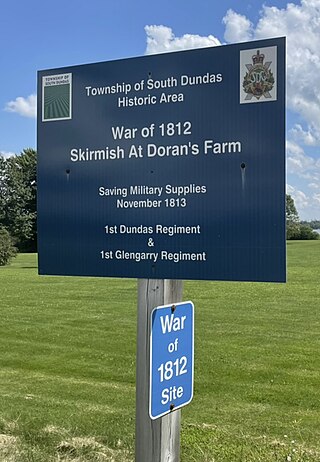
The Skirmish at Doran's Farm was a small skirmish during the War of 1812 fought during Wilkinson's advance up the St. Lawrence.

The Battle of Hoople's Creek,, was a skirmish fought on November 10, 1813, as a precursor to the Battle of Crysler's Farm.
The Salmon River Raid was a raid conducted by British forces in February 1814 against the recently abandoned American bases along the Salmon River near French Mills, New York. A previous raid and battle at French Mills had been conducted in 1812.
The Raid on Madrid was a small raid by Canadian Militia and Royal Marines on the village of Madrid, New York, during the War of 1812.
The Assault on Ogdensburg, also known as the First Battle of Ogdensburg or the Battle of Prescott, was an attack by Canadian militia on the American defences at Ogdensburg on October 4, 1812.













